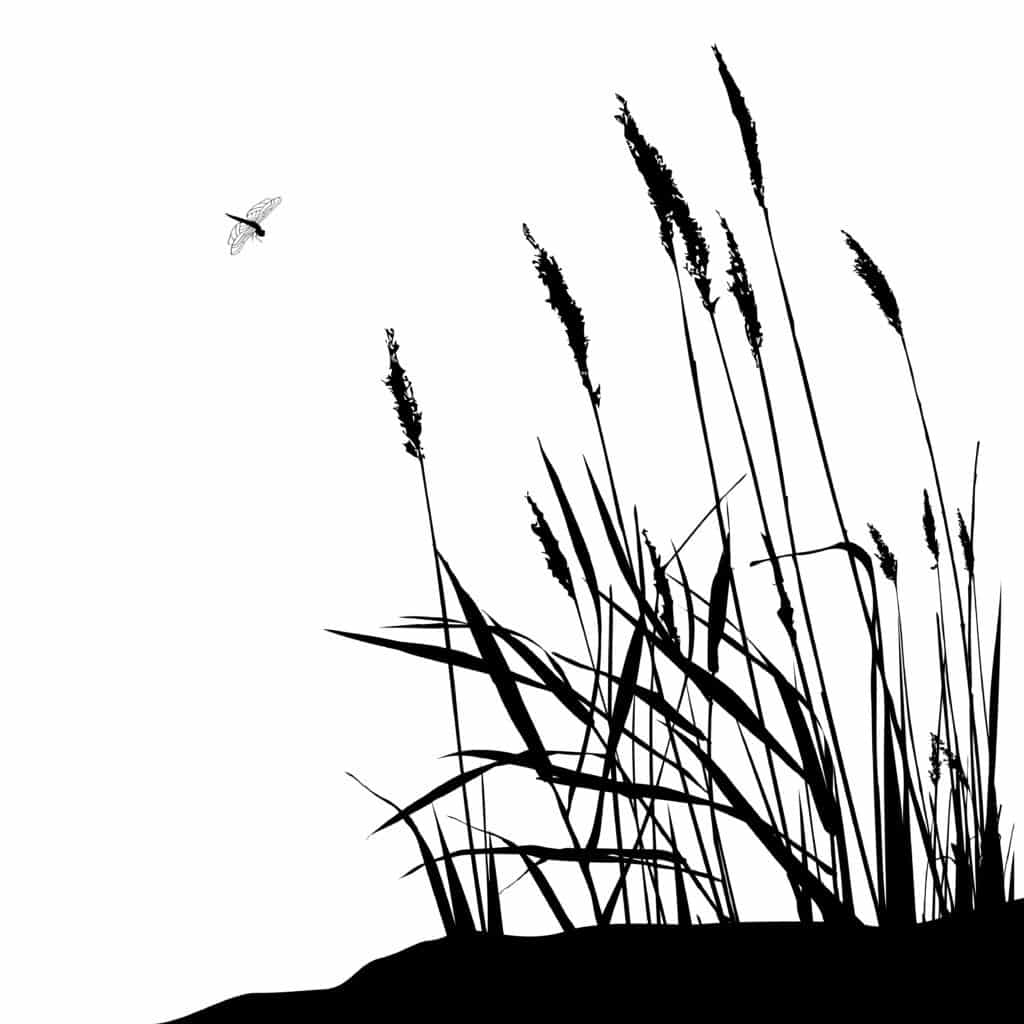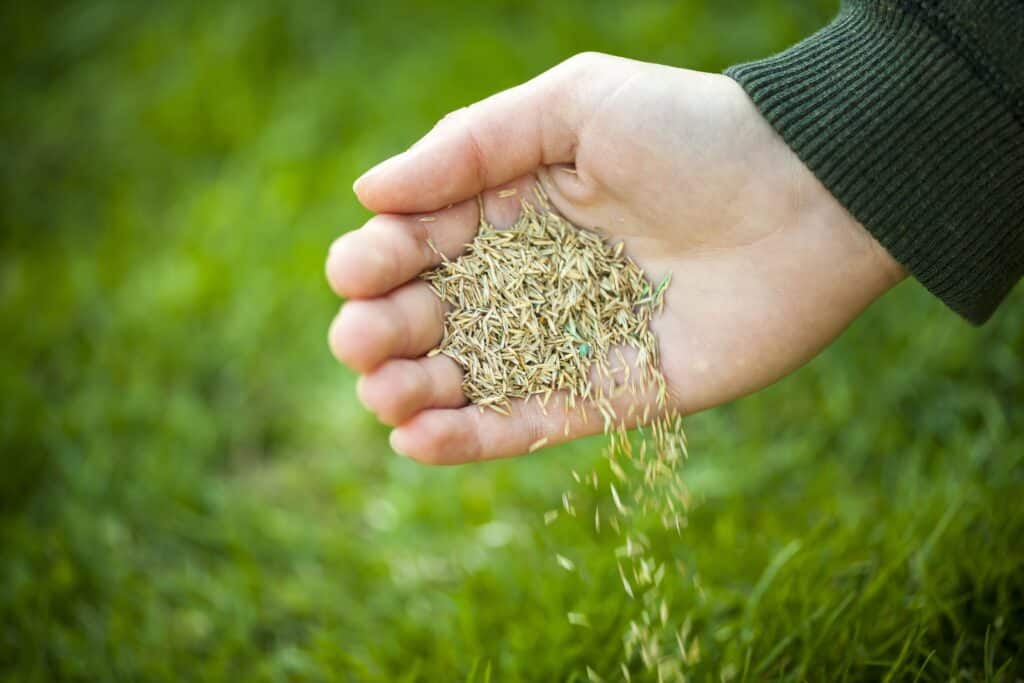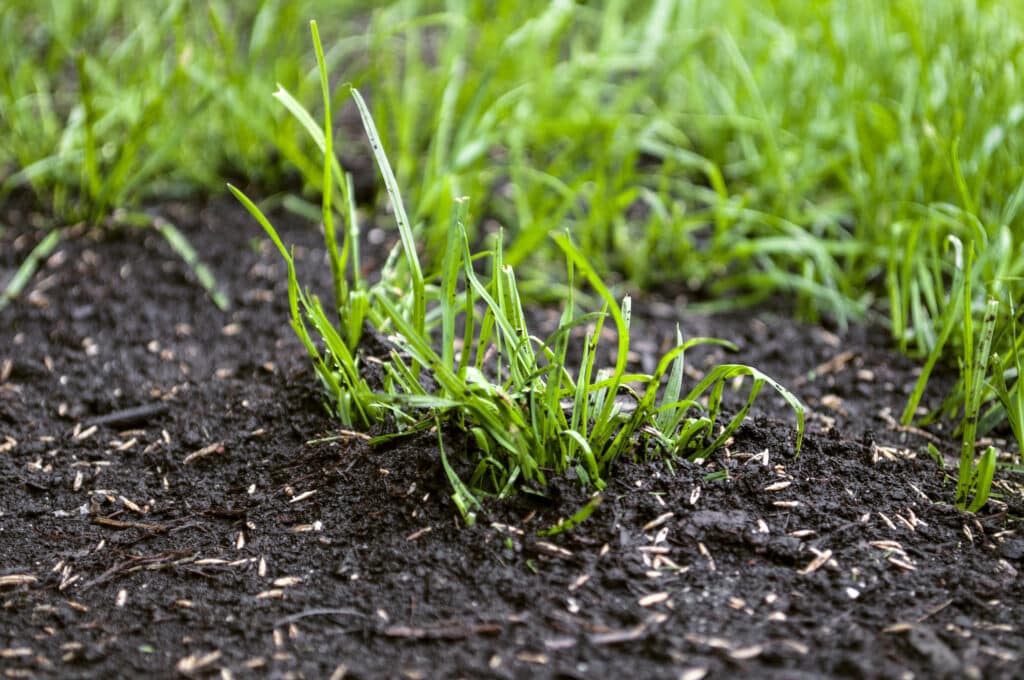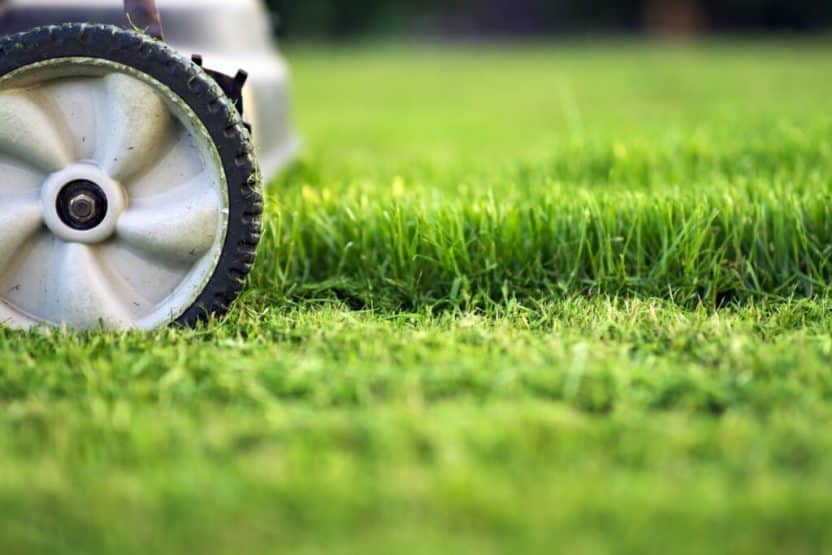A thick, green lawn is one of my favorite things to enjoy in the garden, but it takes a little effort to keep it looking good. Thankfully, grasses are perfectly suited for lawns due to the way they reproduce and spread to thicken and fill in gaps. This article is going to explain exactly how grass reproduces to help you grow a perfect lawn.
Grass has the capability to reproduce both sexually and asexually. Grass reproduces sexually when seeds produced by healthy grass are fertilized and begin to grow. Asexual reproduction occurs when the rhizome spreads under the soil, or stolons spread along the surface, and new shoots are produced.
The ability of grass to reproduce and spread makes it possible to thicken your lawn and fill in bare patches quite easily. There are many types of grass and there will be some variation. No matter what type of grass you have, I would love to help you better understand how your grass is created to allow you to have the best-looking lawn on the block.
How Grass Reproduces Asexually
Grass reproduces through a process called vegetative propagation. This is the process where a plant produces new plantlets from the parent stock without the need for fertilization and seed production. Vegetative propagation of grass occurs through the production of side shoots called stolons or through the spread of rhizomes under the soil.
Rhizomes are horizontal stems that grow underneath the soil from the base of the parent plant. These rhizomes are able to produce new shoots that grow upwards, producing new grass, and roots that grow downwards into the soil.
Grass can also create things very similar to shoots that are called stolons. Stolons are also grown from the base of a grass plant, but they grow along the surface, producing new plantlets that help the grass to thicken and spread.
After the new plantlets from rhizomes or stolons have matured, they can break off of any connected rhizomes or stolons that they grew from and be an independent plant. These new plants can even produce seeds that can be used to create more grass.
Asexual reproduction in the grass is most likely to happen when conditions are fairly wet. When they’re not getting enough hydration, it is much more common for grass to produce sexually. (Source)
How Grass Reproduces Sexually
The most common way that grass is grown is through a process called “re-seeding.” The name of this makes it pretty self-explanatory but it is important that we understand exactly how this is done. When grass is short it can be kind of difficult to see how there are any seeds on the grass plant itself. If you have ever let your grass grow out you may have begun to notice that there were some small things growing on top of each blade. This is where the seeds come from.
These things growing on top of your grass are called buds. They produce seeds that can be used to create more grass plants. As these buds are moved around the seeds fall off and land on the ground. Then, if your conditions are right the seed will begin to grow stems that turn into grass. (Source)

It is important that in order for grass to grow and continue to fertilize, it must be pollinated. Pollination of grass does not generally happen in the same way that other plants get pollinated. Generally, plants will have the help of insects to move pollen around, but because the grass is so small and very numerous, it is not very feasible for insects to be able to accomplish this.
This means that almost all the pollen that grass receives comes from the wind. Plants like flowers will shed their pollen and the wind picks it up and lucky for the grass it will land right on the ground. The wind is the trigger that allows flowers and grass to cross-pollinate which makes the grass much more able to thrive and grow. The pollen from a flower contains a seed that has the capability to create a new plant. (Source)
There are some types of grass, such as needle grass, that have the ability to self pollinate making them much more likely to survive. There are also some types of grass-like bluegrass that can reproduce without needing to be pollinated. (Source)
Not all seeds that land on the ground are going to stick and turn into the grass, however when they exist at the correct temperature and have plenty of water, then they will have all the things that they need to produce healthy grass.
How Quickly Does Grass Reproduce?
Under the right conditions, you should expect your grass to grow within 10 to 14 days. (Source) This doesn’t mean that you will have a full yard of green grass in that amount of time, but it does mean that in that amount of time you can start to see blades of grass poking out of your soil. It may be closer to 21 days in certain areas. However, you should expect it to be another 3-4 weeks after that that you will see grass that is long enough to mow. (Source)
This means that if you’re going to plant seeds yourself you should probably plant sometime in the early spring to allow for the seeds to begin growing while there is still plenty of sunlight. Many people reported that they began to see significant growth after about 30 days. As you can see planting your seeds in the late summer is not going to allow for your grass to take root before the winter temperatures come and derail all the progress you made.
How Can I Grow More Grass?
So with all this wonderful information about how the grass is actually formed, you may still be wondering how this all applies. After all, you may still have dead patches of grass in your lawn that you want to help grow to be healthier and much more full. Here are a few tips to remember when trying to grow healthier and fuller grass. (Source)

1: Let your grass grow out – This is a great and very easy step for you to take. Like we mentioned previously when grass grows longer it begins to produce buds that have seeds that have the ability to produce more grass plants. This also allows tillers to grow to become their own independent grass plant. This is a super simple method however you want to be careful. Longer grass can be a fire hazard and can be kind of an eyesore to anyone driving by your home. If you are able to put up with those things then you will reap many rewards when it comes to your lawn.
2: Plant seeds yourself – If you’re like me, you don’t have time to wait for your grass to grow out just so that it can grow seeds that may or may not help you get more grass. So, we need to buy some seeds. You can buy grass seed at almost any store that sells garden products and plant it yourself. There are a few things you may want to look out for though before you start. It is important that you know what kind of grass you have.
Although you may be able to grow a few different kinds of grass within the same space, you may find yourself regretting that decision when your grass looks uneven. The best way to figure out the type of grass you have would be to ask the person at the garden section of your local store. They will likely be able to help you figure out which seed works best for your lawn.
You also want to make sure that you plant your seed at the right time of day. As you probably already know, plants need sunlight to grow. It would be wise to plant earlier in the day to allow for the most amount of exposure to the sun. (Source)
3: Do not overwater – As a general rule, it is important that your lawn gets 1-2 inches of water every week. This does not mean that you only need to water your lawn once a week. In fact, doing this can be damaging to your lawn. It is best to spread the amount of water you put on your grass throughout the week. Obviously, 1-2 inches of water can be pretty hard to measure, and if you’re like me and struggle to judge what is too little or too much there is a simple method you can use to measure.
This method is very simple, get some kind of container like a tuna can and place it by wherever your sprinkler is set up. When you feel like your grass has received enough water for the day go and measure how much water is in the can. This will give you a good idea of how much water your grass has received. (Source)
Determining the time needed can be difficult considering that each lawn’s size and build are different. This can also be dependent on the area you live in. Grass watering requirements are likely to be very different in a state like Florida when compared to a much drier climate like Arizona. It is also best to keep in mind that the best time to water your lawn is in the morning.
According to the United States Environmental Protection agency about half the water that is used to water our lawns is evaporated before it even has the chance to help our lawn. Watering in the morning when it is cooler outside will allow your lawn to soak up those nutrients before the sun can mess things up.
4: Don’t walk on it – Sometimes it can be so tempting to just cut across the lawn, but if you are serious about growing healthy and full grass then it is important that you allow it to grow in an undisturbed environment. If you have ever been somewhere and you notice that there is a dirt path right in the middle of someone’s lawn that is probably because they frequently walk across there.
Now, don’t get me wrong, stepping on your grass one time is not a cause for great alarm, but frequent travel across certain areas of grass can be very damaging and can make it hard for anything to grow.
5: Fertilize – There are many products like fertilizer that you can spread across your lawn that will help it grow. On your next trip to the store, ask someone at the garden section what would be best for your lawn. (Source)
6: Don’t cut your grass too short – We talked about letting it grow out already, but it is also important to remember that while you are cutting your lawn to not let it get too short. Allowing your grass to have a little length allows the top layer of your grass to provide a little bit of shade and protection for what is underneath it. This lets the roots grow strong and you will start to see tillers growing from the base which creates a much more full look in your lawn. It will also allow what is underneath to be strengthened which will help the rest of the plant survive.

As you can see there are truly many different things you can do to allow your lawn to reproduce and look more full. It’s important that your grass is very fertile and the very best thing you can do is allow it to naturally grow and produce by itself.
It may be tempting to buy multiple bags of seeds and dump them everywhere, but the very best thing for your lawn is going to be you giving it the right amount of water and allowing it to do its thing. It’s going to require some patience but if you are diligent, I know that you can have an amazing-looking lawn that you are going to be proud of.

